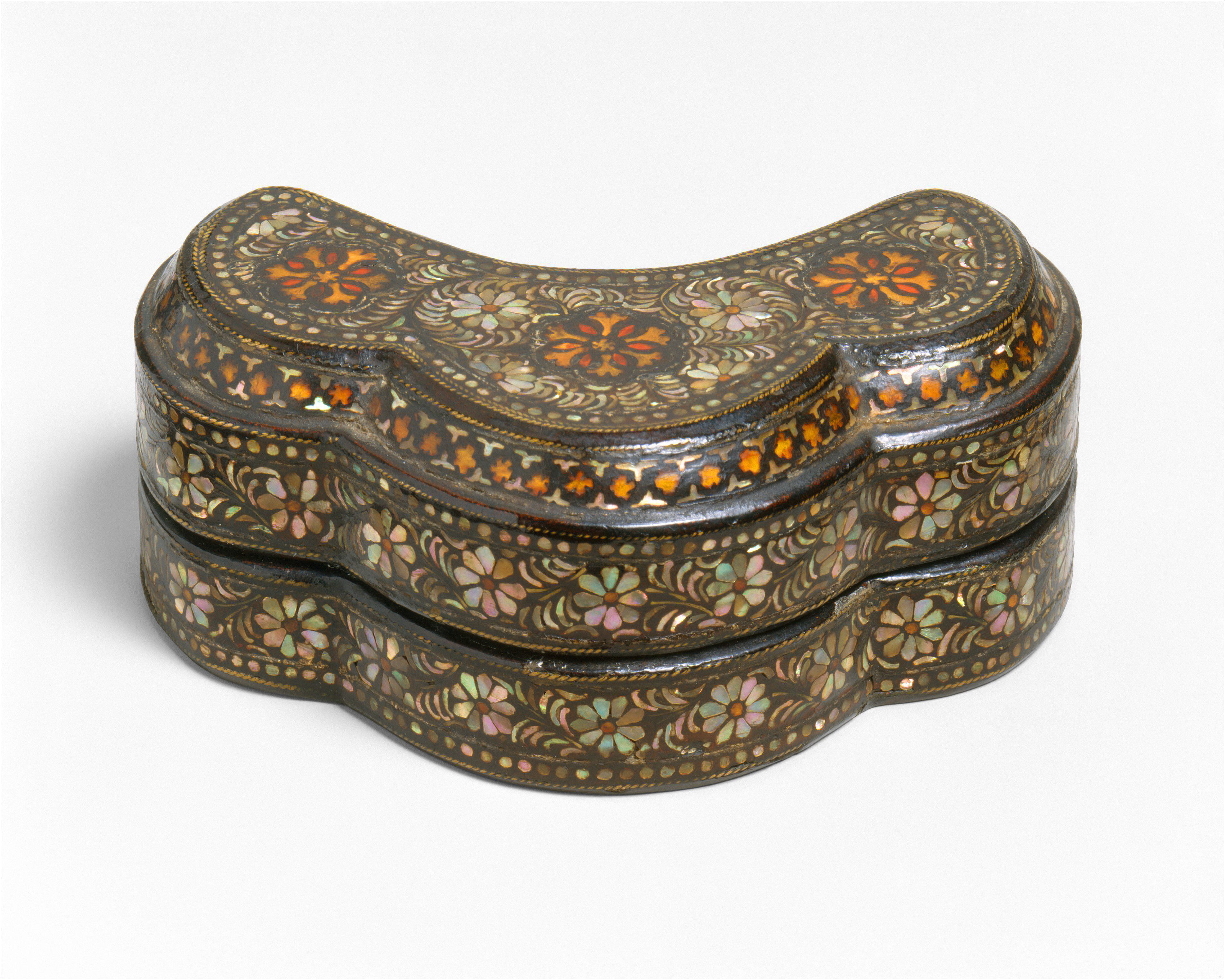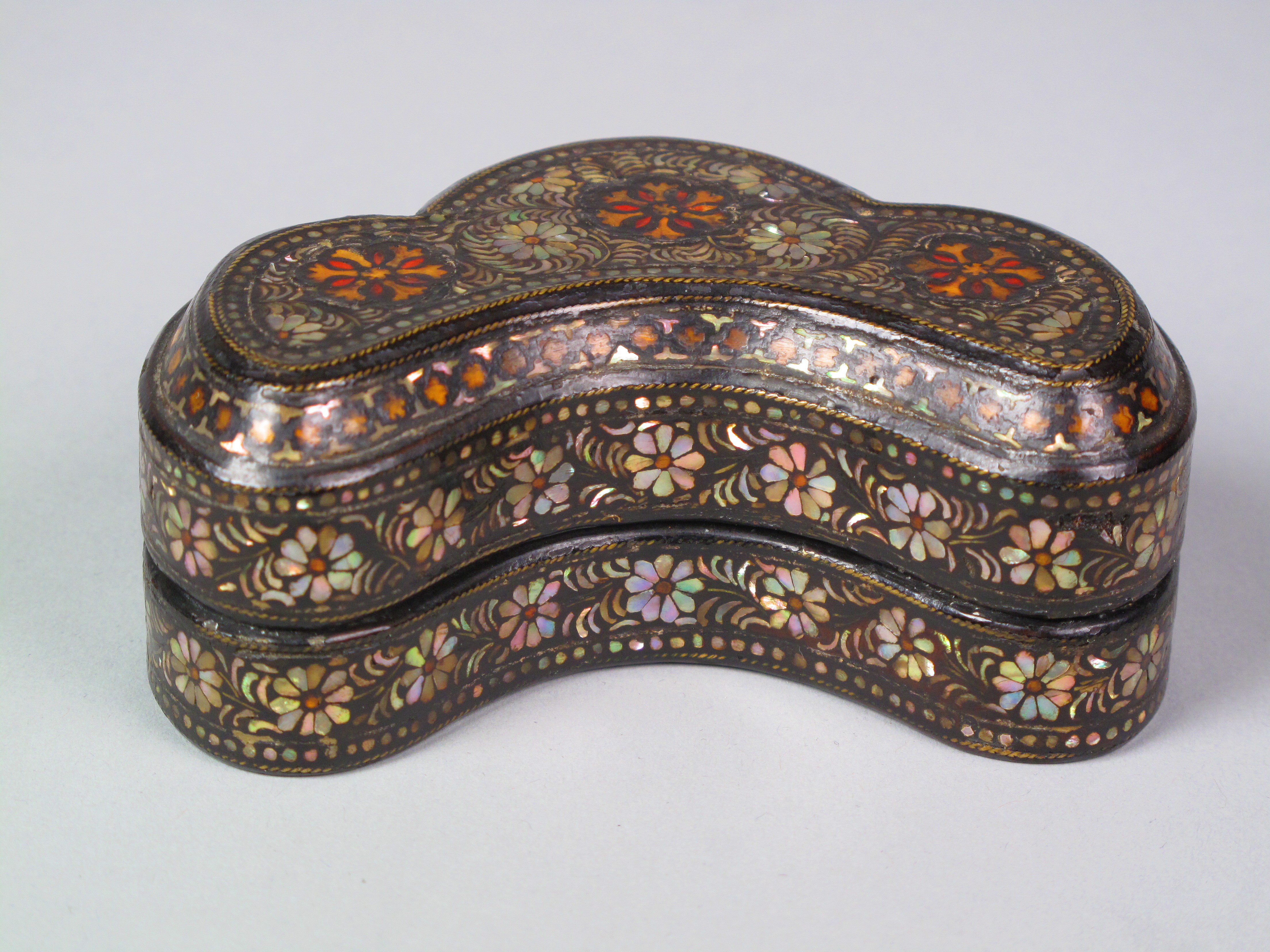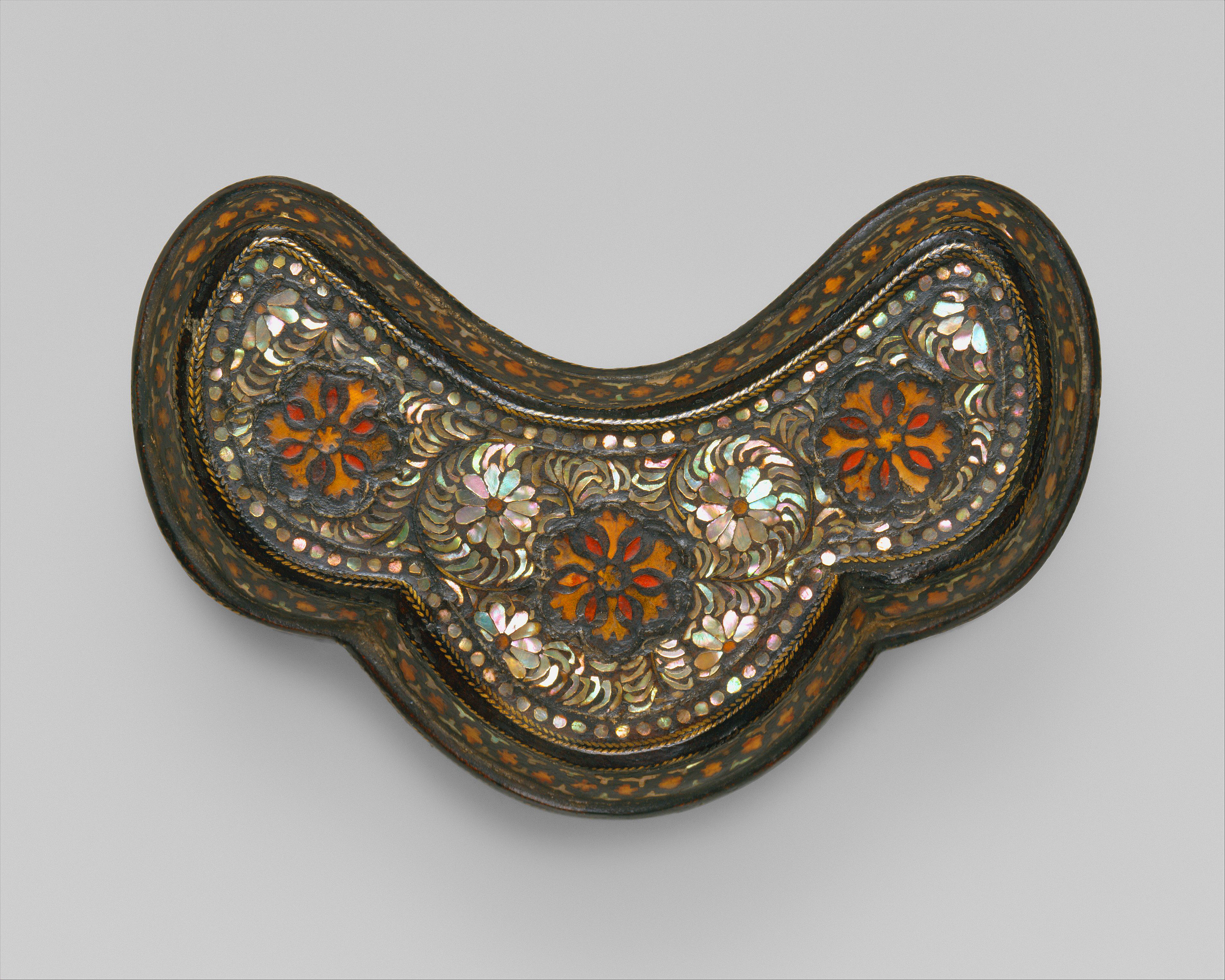꽃무늬 영롱한 희귀 고려 '나전합', 일본서 돌아왔다 | 연합뉴스
꽃무늬 영롱한 희귀 고려 '나전합', 일본서 돌아왔다, 임동근기자, 문화뉴스 (송고시간 2020-07-02 09:00)
www.yna.co.kr
The Return of Goryeo Mother-of-pearl Lacquerware
- Press release on the Goryeo Lacquered Box
Inlaid with Mother-of-pearl Chrysanthemum and Scroll Design
returned from Japan, scheduled to be shown to the public in December 2020 -

The Cultural Heritage Administration of Republic of Korea (Administrator, Chung Jae-suk) is revealing to the press the Goryeo Lacquered Box Inlaid with Mother-of-pearl Chrysanthemum and Scroll Design at the National Palace Museum of Korea for the first time since the box was returned from Japan last December. An example of the stunning lacquerware produced during the Goryeo Dynasty that demonstrates the quintessence of the era’s art, this was originally part of a set of nested boxes. Only three boxes from the original set have survived intact, and this one from a private collection was the only one that could be purchased. Its return is the fruit of all-out efforts by the Overseas Korean Cultural Heritage Foundation (Chairman, Choi Eungchon), which applied its years of experience and expertise and skillfully negotiated with its former owner as mandated by the Cultural Heritage Administration. It is deeply meaningful for Korea, as the birthplace of Goryeo mother-of-pearl-inlaid lacquerware, to acquire an inner box from a set of nested mother-of-pearl-inlaid lacquered boxes for the first time.

Goryeo lacquerware with mother-of-pearl inlay was highly praised at the time, as noted in the description “exquisite and precious” offered by Song Chinese imperial envoy Xu Jing, who visited Goryeo and wrote the Illustrated Account of the Xuanhe Embassy to Goryeo in 1123 (the first year of Goryeo King Injong’s reign). Together with Goryeo celadon and Buddhist painting, it has been considered definitive of the aesthetics of the time. Around twenty Goryeo mother-of-pearl-inlaid lacquerware items are known to exist today, with most collected by major museums in the United States and Japan. Only two items were housed in Korea before the return of this box.
The returned box is approximately 10 centimeters long and weighs around 50 grams. The brilliant abalone shell, gently colored tortoiseshell, and elaborate metal wire inlay decorations make the box a masterpiece that reflects the characteristic refined beauty of Goryeo lacquerware inlaid with mother-of-pearl designs.

On the lid and body of the box is a chrysanthemum and scroll design as the main motif. Densely arranged mother-of pearl ornaments, cut too small to be picked up even by the fingertips, strike an elegant rhythm. The large flower and the stamen of a chrysanthemum at the center of the lid show the use of tortoiseshell that has been ground flat and transparent enough to reflect the colors painted on the reverse side, a decoration technique characteristic of Goryeo mother-of-pearl-inlaid lacquerware. The edges of the lid are densely decorated with a pearl design. Scroll designs made of metal wire, the twisted metal wire adorning the outlines of the box, and other designs create an elegant harmony.

The Cultural Heritage Administration commissioned the National Research Institute of Cultural Heritage (Director, Ji Byong Mok) to conduct non-destructive analysis of the lacquered box in order to scientifically analyze the production techniques and materials applied and safely collect basic data for comparative study. This analysis was conducted from January through March this year and revealed that the returned box was made using techniques and materials common to the production of Goryeo mother-of-pearl-inlaid lacquerware. The frame of the box was made of wood, which was then coated with cloth and lacquered. Cuts were made at regular intervals inside the wooden frame to allow a curved body. The body was created by adding side walls to the base and top walls.
The returned mother-of-pearl-inlaid lacquerware will be transferred to the National Museum of Korea (Director-General, Bae Kidong) and celebrated in diverse exhibitions, publications, and research projects. This lacquered box with mother-of-pearl inlay was first displayed to the Korean public in 2006 at the special exhibition “Korean Lacquerwares: The Everlasting Beauty” held at the National Museum of Korea. Fourteen years later, it will appear again in front of the public this winter at the special exhibition “Ancient Colors: Lacquer” at the National Museum of Korea (December 22, 2020 to March 7, 2021)—this time as a wholly Korean possession.

Taking the opportunity of this successful return, the Cultural Heritage Administration will continue making efforts to discover and retrieve important cultural properties and build close cooperative relations with related institutions for the efficient implementation of projects connected to the retrieval, research, exhibition, and promotion of cultural properties located overseas. In so doing, it will work to offer further opportunities for Koreans to experience precious Korean cultural heritage.
일본에서 돌아온 고려‘나전국화넝쿨무늬합’언론공개
- 고려 나전칠기 1점 지난해 12월 귀환, 국내 처음 자합 형태 나전합 보유 -
문화재청(청장 정재숙)은 고려시대 예술을 대표하는 나전칠기 유물인 고려 나전국화넝쿨무늬합(이하 ’나전합‘)을 지난해 12월에 일본에서 들여와 오늘 국립고궁박물관에서 언론에 공개한다.
이번에 들어온 ‘나전합’은 모자합(母子盒, 하나의 큰 합 속에 여러 개 작은 합이 들어간 형태)의 자합(子盒) 중 하나로, 전 세계에 단 3점만이 온전한 형태로 전해지는 상황에서, 유일하게 매입 가능했던 개인 소장품이었다. 이번 환수는 문화재청의 위임을 받은 국외소재문화재재단(이사장 최응천)이 그동안의 경험과 전문성을 바탕으로 심도 있는 전략을 수립하고 소장자와의 협상에 임하여 이뤄낸 값진 성과다. 또한, 고려 나전칠기 생산국인 우리나라에서 처음으로 자합 형태의 ‘나전합’을 보유할 수 있게 되었다는 점에서 이번 환수는 더욱 뜻 깊다.

환수된 ‘나전합’은 길이 10㎝ 남짓에 무게는 50g의 크기다. 영롱하게 빛나는 전복패와 온화한 색감의 대모(玳瑁, 바다거북 등껍질), 금속선을 이용한 치밀한 장식 등 고려 나전칠기 특유의 격조 높은 아름다움이 고스란히 반영된 수작으로 평가받는다. 뚜껑과 몸체에 반복되는 주요 무늬는 국화와 넝쿨무늬로, 손끝으로 집기 어려울 정도로 매우 작게 오려진 나전이 빈틈없이 빼곡하게 배치되며 유려한 무늬를 만들어내고 있다. 뚜껑 가운데의 큰 꽃무늬와 국화의 꽃술에는 고려 나전칠기를 대표하는 특징 중 하나인 대모복채법(玳瑁伏彩法)이 사용되었으며, 뚜껑 테두리는 연주문(連珠文)으로 촘촘히 장식되었다. 또한, 금속선으로 넝쿨 줄기를 표현하고 두 줄을 꼬아 기물의 외곽선을 장식하는 등 다양한 문양 요소가 조화롭고 품격 있게 어우러져 있다.
* 대모복채법: 바다거북의 등껍질인 대모를 얇게 갈아 투명하게 만든 판 안쪽에 안료를 칠하여 앞면에 비쳐보이도록 하는 기법
* 연주문: 점이나 작은 원을 구슬을 꿰맨 듯 연결시켜 만든 문양

고려 나전칠기는 고려 중기 송나라 사절로 고려에 왔던 서긍이 지은 ‘고려도경(高麗圖經, 1123년, 인종 1년)’에 ‘극히 정교하고(極精巧, 극정교)’, ‘솜씨가 세밀하여 가히 귀하다(細密可貴, 세밀가귀)’라는 찬사를 받는 등 고려청자, 고려불화와 함께 고려의 미의식을 대표하는 최고의 미술공예품으로 손꼽혀 왔다.
현재 고려 나전칠기는 전 세계에 불과 20여 점만이 그 존재를 확인할 수 있으며, 대부분은 미국과 일본의 주요 박물관에 소장되어 있다. 우리나라는 온전한 형태의 고려 나전칠기 유물을 단 2점만 보유하고 있었는데, 이번에 돌아온 ’나전합‘이 추가되어 총 3점을 소장하게 되었다.

한편, 문화재청은 유물을 훼손하지 않으면서도 제작방식과 사용 재료를 과학적으로 분석하고 비교연구를 위한 기초자료 구축을 위해 올해 1월부터 3월까지 국립문화재연구소(소장 지병목)를 통해 이번 유물의 비파괴분석을 실시하였다.
분석 결과, ‘나전합’은 전형적인 고려 나전칠기의 제작기법과 재료가 사용된 것으로 나타났으며, 나무로 모양을 잡은 뒤 그 위에 천을 바르고 옻칠을 한 목심칠기(木心漆器)라는 점, 판재 안쪽 면에 일정한 간격으로 칼집을 넣고 부드럽게 꺾어 곡선형의 몸체를 만든 점, 몸체는 바닥판과 상판을 만든 후에 측벽을 붙여 제작된 점 등이 확인되었다.
이번에 환수한 ‘나전합’은 지난 2006년 국립중앙박물관(관장 배기동) 특별전 ‘나전칠기-천년을 이어온 빛’에서 최초로 공개된 바 있다. 이번에 환수되면서 국립중앙박물관으로 이관되어 올해 하반기에 국립중앙박물관의 특별전 ‘고대의 빛깔, 옻칠(’20.12.22~‘21.3.7)’에서 온전한 우리의 것으로 14년 만에 다시 모습을 나타낼 것이다. 또한, 보고서 출판 등 다양한 분야에서 연구‧활용할 계획이다.
문화재청은 이번 성공 사례를 계기로 앞으로도 중요문화재 발굴‧환수에 힘쓰고, 유관기관과 긴밀한 협력망을 구축하여 환수부터 연구‧전시 등 활용까지 유기적으로 진행하여 우리 국민의 소중한 문화유산의 체험 기회를 확대하고자 더욱 노력할 계획이다.
'NEWS & THESIS' 카테고리의 다른 글
| 포렌식 기술이 살린 8천년전 석기시대 남자 (1) | 2020.07.04 |
|---|---|
| Jeju Island UNESCO Global Geopark Delayed to September next year (0) | 2020.07.03 |
| 4년간 천명 감원한다는데 노조가 합세? (3) | 2020.07.01 |
| 꼬다리만 딜링 나온 삼척 흥전리절터 손잡이 달린 향로[柄香爐] (1) | 2020.06.30 |
| 매니저 머슴살이 의혹 휘말린 이순재 (2) | 2020.06.30 |




댓글